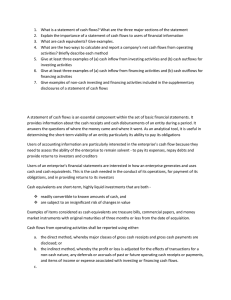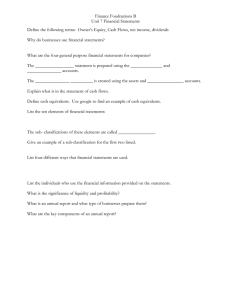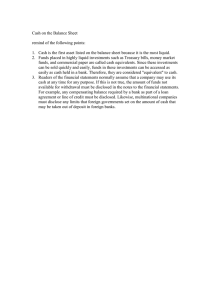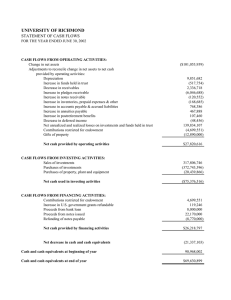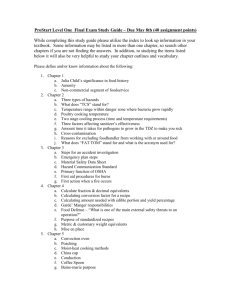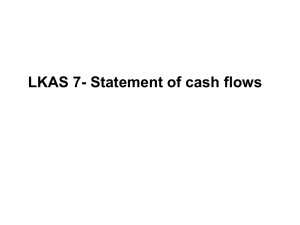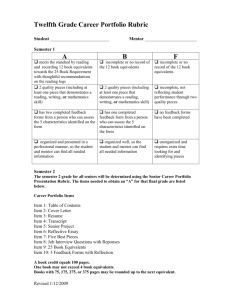AS 3: Cash Flow Statement
advertisement
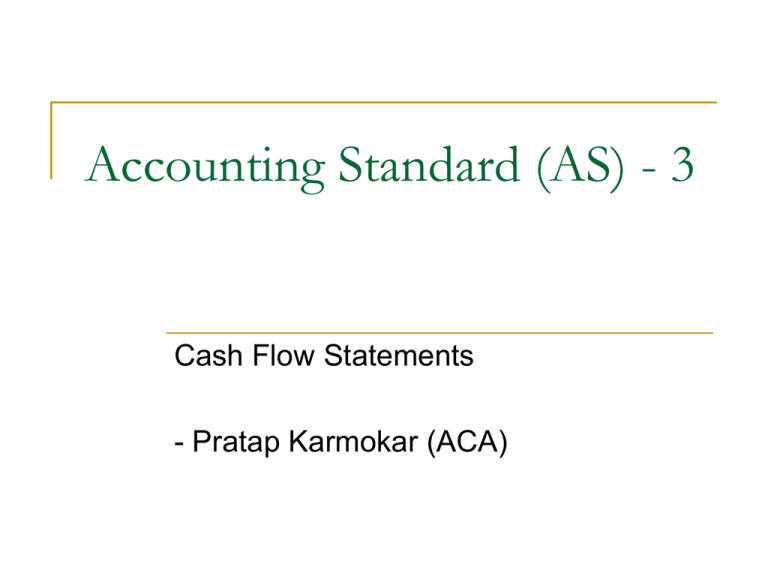
Accounting Standard (AS) - 3 Cash Flow Statements - Pratap Karmokar (ACA) Index Introduction Applicability Definitions Cash and Cash equivalents Features of Cash Flow Statement Operating Activities Investing Activities Financing Activities Interest Dividend Foreign Currency transactions Extraordinary items Treatment of Tax Investments in subsidiaries, associates and joint ventures Acquisitions and disposals of subsidiaries and other business units Non-cash transactions Disclosures of cash and cash equivalents Introduction Cash flow statement is additional information to user of financial statement This statement exhibits the flow of incoming and outgoing cash This statement assesses the ability of the enterprise to generate cash and cash equivalents It also assesses the needs of the enterprise to utilise the cash and cash equivalents generated It also assesses the liquidity and solvency of the enterprise. Applicability This standard applies to the enterprises: Having turnover more than Rs. 50 Crores in a financial year; Listed companies; Cash flow statement of listed companies shall be presented only under the indirect method as prescribed in AS 3 Definitions Cash comprises cash on hand and demand deposits with banks. Cash equivalents are short term, highly liquid investments that are readily convertible into known amounts of cash and which are subject to an insignificant risk of changes in value. Cash flows are inflows and outflows of cash and cash equivalents. Operating activities are the principal revenue-producing activities of the enterprise and other activities that are not investing or financing activities. Investing activities are the acquisition and disposal of long-term assets and other investments not included in cash equivalents. Financing activities are activities that result in changes in the size and composition of the owners’ capital (including preference share capital in the case of a company) and borrowings of the enterprise. Cash and Cash Equivalents Cash Equivalents Cash flows exclude Held for meeting short term commitments It is readily convertible into known amounts of cash It has a very insignificant risk Short maturity (say 3 months maximum) Movements between cash and cash equivalents Cash management includes the investment of excess cash in cash equivalents Features of Cash Flow Statement The cash flow statement should report cash flows during the period classified by Operating, Investing and Financing activities. Sum of these three types of cash flow reflect net increase or decrease of cash and cash equivalents. Operating Activities These are principal revenue producing activities of the enterprise. Examples: Cash receipts from sale of goods / rendering services; Cash receipts from royalties, fees, commissions and other revenue; Cash payments to suppliers of goods and service; Cash payments to and on behalf of employees. Investment Activities The activities of acquisition and disposal of long term assets and other investments not included in cash equivalent are investing activities. It includes making and collecting loans, acquiring and disposal of debt and equity instruments, property and fixed assets etc. Examples of cash flows arising from investing activities are as follows: Cash payments to acquire fixed assets Cash receipts from disposal of fixed assets Cash payments to acquire shares, warrants or debt instruments of other enterprises and interest in joint ventures Cash receipt from disposal of above investments Financing Activities Those activities that result in changes in size and composition of owners capital and borrowing of the organization. It includes receipts from issuing shares, debentures, bonds, borrowing and payment of borrowed amount, loan etc. Sale of share Buy back of shares Redemption of preference shares Issue / redemption of debentures Long term loan / payment thereof Dividend / interest paid Cash flow from operating activities It can be derived either from direct method or indirect method Direct method: In this method, gross receipts and gross payments of cash are disclosed Indirect method: In this method, profit and loss account is adjusted for the effects of transaction of non-cash nature. Interest Interest Received Received from investment – it is in investment activities Received from short term investment classified, as cash equivalents should be considered as cash inflows from operating activities. Received on trade advances and operating receivables should be in operating activities Interest Paid On loans / debts are in financing activities On working capital loan and any other loan taken to finance operating activities are in operating activities Cash flow from interest should be separately disclosed. Dividend Dividend Received For financial enterprises – in operating activities For other than financial enterprises – in investing activities Dividend Paid Always classified as financing activities Cash flow from dividend should be separately disclosed Foreign currency transaction The effect of change in exchange rate in cash and cash equivalents held in foreign currency should be reported as separate part of the reconciliation of cash and cash equivalents. Unrealized gain and losses arising from changes in foreign exchanges rates are not cash flows. Extraordinary items The cash flows associated with extraordinary items should be classified as arising from: Operating Investing or Financing activities as appropriate and separately disclosed. Treatment of tax Cash flow for tax payments / refund should be classified as cash flow from operating activities. If cash flow can be specifically identified as cash flow from investment / financing activities, appropriate classification should be made. Investments in subsidiaries, associates and joint ventures Only the cash flow between itself and the investee is required to be reported Example: Cash flow relating to dividends and advances Acquisitions and disposals of subsidiaries and other business units Cash flow on acquisition and disposal of subsudiaries and other business units should be : Presented separately Classified as investing activities Total purchase and disposal should be disclosed separately The position of the purchase / disposal consideration discharged by means of cash and cash equivalents should be disclosed Non-cash transactions These should be excluded from the cash flow statement These transactions should be disclosed in the financial statements. Examples Acquisition of assets by assuming directly related liabilities Acquisition of an enterprise by means of issue of equity sshares Conversion of debt to equity Disclosures of cash and cash equivalents The components of cash and cash equivalents should be disclosed Reconciliation of the amount in the cash flow statement with the equivalent items reported in the balance sheet The amount of cash and cash equivalent balance held by the enterprises that are not available for use (with explanation by management)
